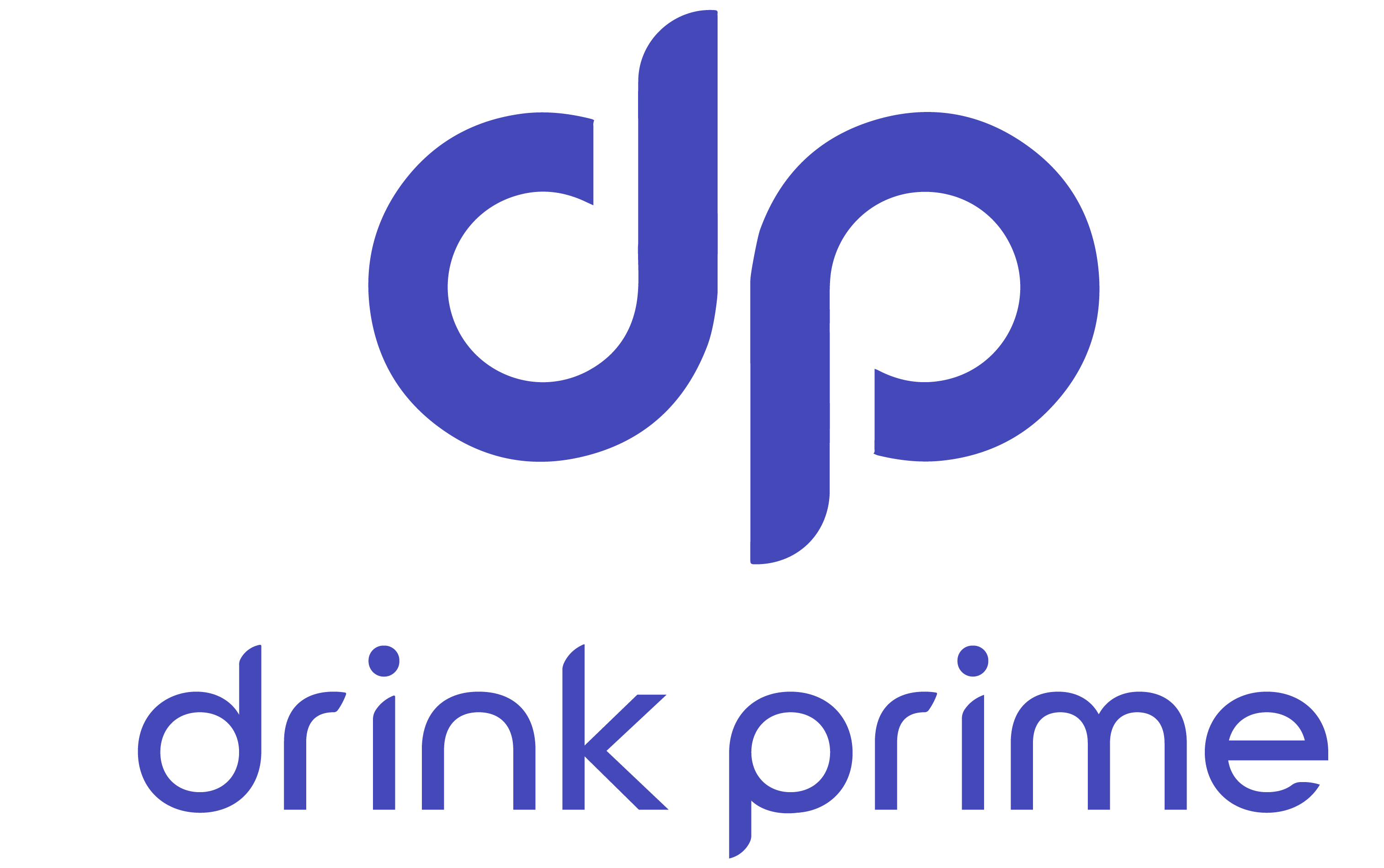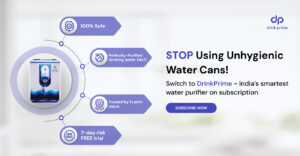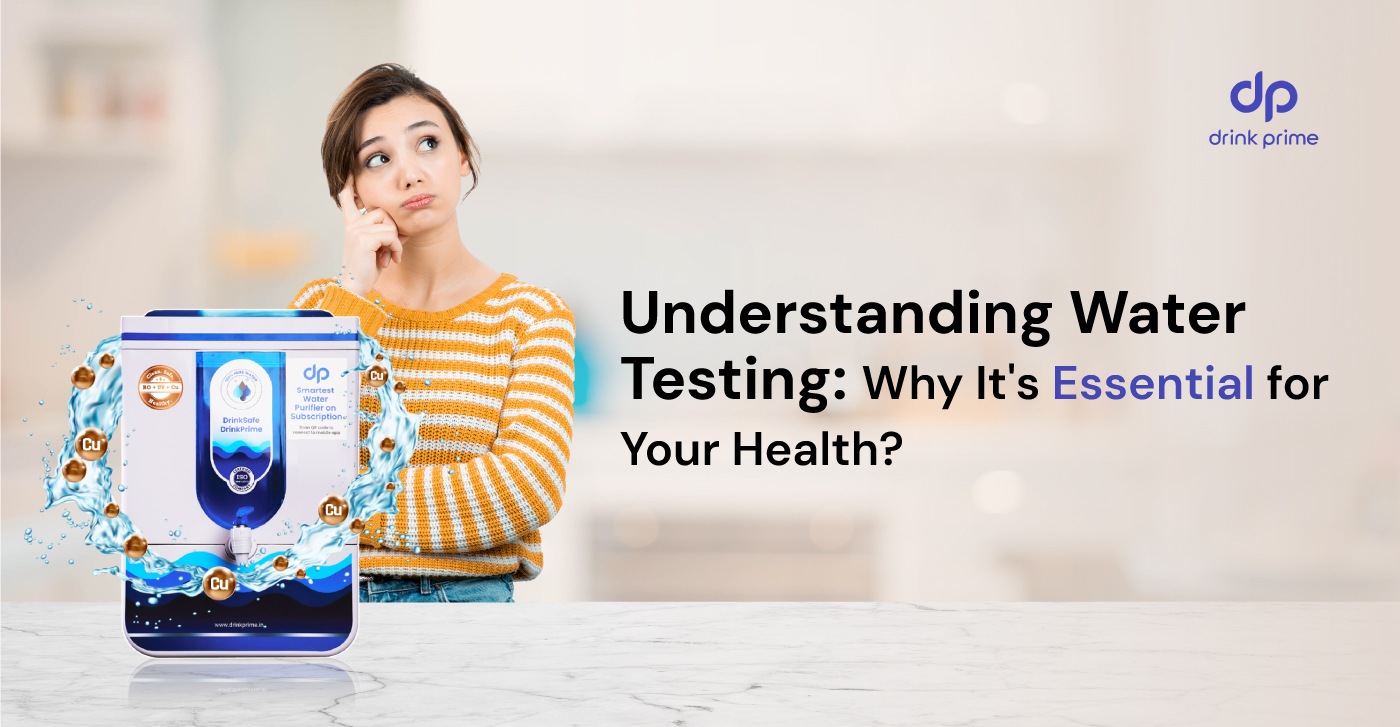Can you picture a scenario where your cup of morning tea may be laced with a cocktail of drugs and contaminants? If this sounds straight out of a science fiction series, you may be shocked that this is closer to reality than you imagine. In the past decade, emerging contaminants have surfaced as an environmental hazard, posing a threat to both the ecosystem and humans.
The fact that they are present in very low concentrations makes it difficult to detect them. But the fact remains that despite their low concentrations the impact of emerging contaminants on public health as well as the environment, is a matter of grave concern. In this blog, we investigate some of the emerging contaminants threatening our water treatment systems as well as ways to tackle them effectively.
What are the recent emerging contaminants?
The presence of contaminants in drinking water has been detected since the beginning of civilization and humans through the ages have been taking measures to deal with them. In the past decade or so, a category of contaminants listed as emerging contaminants has been posing a threat to our drinking water systems.
Emerging contaminants in water are any synthetic or naturally occurring pollutants like chemicals or microorganisms that are not usually listed as contaminants or monitored but have the potential to adversely impact the environment or human health. Pharmaceuticals, personal care products, fire retardants, pesticides, etc. are some of the categories of emerging contaminants.
They are known to disrupt the physiology of the target receptors. For instance, many of them have been slated as endocrine disruptive compounds that adversely affect our endocrine systems,
The contaminants present in aquatic systems are proving to be a major threat to the water distribution system. Traces of emerging contaminants like insecticides, personal care products, etc. have been found in groundwater, wastewater, surface water, etc. They enter through direct discharge of treated or wastewater from industrial or municipal plants, sewer overflow, surface runoff from agricultural lands, etc.
Emerging contaminants in water
1. Pesticides
Widely used in farms and homes, herbicides and pesticides prove to be a boon to keep pesky bugs that destroy crops or plants at bay. But the problem occurs because when we spray them on plants these pesticides often end up getting washed away by rains into our lakes and rivers or they seep into groundwater.
Thus, they end up in our water supply system. Every time we use personal care products like soap, detergents, etc. traces of these substances which are ultimately chemical in composition, enter our waterways turning into contaminants.
2. Industrial discharges and consumer items
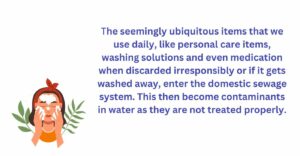
The seemingly ubiquitous items that we use daily, like personal care items, washing solutions, and even medication when discarded irresponsibly or if they get washed away, enter the domestic sewage system. These then become contaminants in water as they are not treated properly. In some cases, stormwater run-off washes these pollutants directly into local water bodies without any treatment, posing a severe threat to the environment as well as human health.
3. Animal husbandry
Veterinary pharmaceutical products, especially in rural areas with farm animals, find their way to groundwater when rains wash them off fields, which are used for grazing or crop production with animals. It is reported that almost eighty percent of antibiotics admitted to livestock are excreted by animals either intact or as metabolites, making this an unexpected contaminant to pollute our water bodies.
4. Fire retardants
Ironically, the substances that protect us from one hazard prove to be hazardous by itself in another medium. Unfortunately, fire retardants when ingested through drinking water are dangerous for our health.
Ways to Remove Emerging Contaminants
Our traditional water treatment process is severely challenged by the slew of emerging contaminants. Traditional methods like chlorine and ozone while eliminating bacteria and viruses effectively, cannot deal with the newer variants of pollutants. The new contaminants often have very complex structures and properties that are resistant to the typical oxidative method that we used to employ earlier. So, we must employ enhanced methods of purification that are robust enough to eliminate emerging contaminants in drinking water.
Here are some new treatment technologies to deal with emerging contaminants.
1. Activated carbon adsorption
This is a proven method for removing organic compounds and pollutants from water. It works like a sponge, soaking the unwanted elements and holding on to them. The simple design is highly efficient and the ease of operation makes this an efficient technique to deal with pollutants. Though activated carbon is the most widely used adsorbent, due to its highly porous surface area, and thermos stability for the removal of dyes and pharmaceutical products, etc. Other adsorbents like peat, silica gel, carbon nanotubes, etc. are also being used.
2. Advanced oxidation process
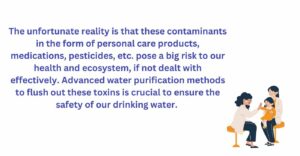
In this technique, strong oxidizing agents are used to break down toxic substances in water to less toxic or nontoxic ones. They generate hydroxyl (OH) or sulfate radicals for oxidation of emerging contaminants. Sometimes ozone and UV irradiation are also used. AOP can remove many toxic substances from water at one go, without producing any hazardous substances in the water. This is because OH is reduced to form H2O as a byproduct.
3. Membrane filtration
In this method, a semipermeable membrane with specific filtering properties like pore size, surface charge, etc. are used to separate contaminants. This includes many types like microfiltration, nanofiltration, forward and reverse osmosis, etc. and they can reduce pollutants to a very large degree. They are not being used extensively, as of today.
4. Solvent extraction
This is a three-step procedure for removing organic and inorganic contaminants from industrial and other wastewater. Transferring solute particles to solvent from water, separating the solute, and finally solvent recovery.
Get 7 Days Risk Free Trial
Conclusion
It is very easy to overlook the risk of these emerging contaminants, simply because it is not visible to us. But it is an unfortunate reality that these contaminants in the form of personal care products, medications, pesticides, etc. pose a big risk to our health and ecosystem, if not dealt with effectively. Advanced water purification methods to flush out these toxins are crucial to ensure the safety of our drinking water.
